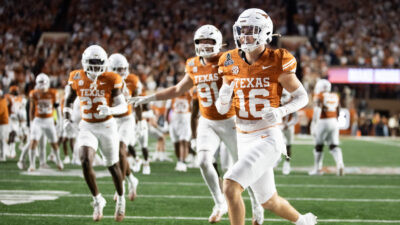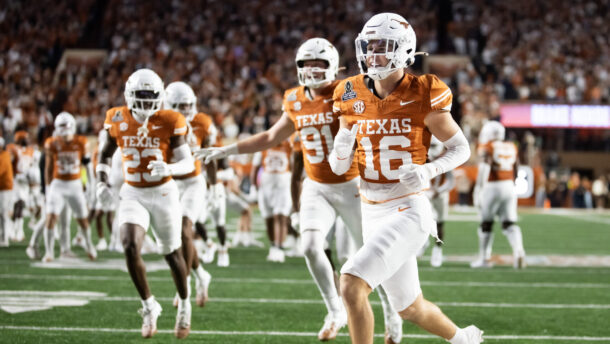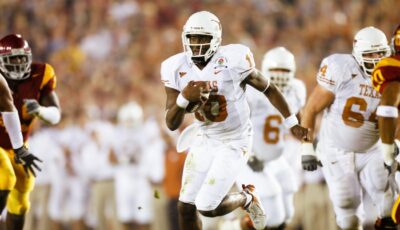
Allegations against Jimbo Fisher’s staff shed light on even greater power shift with new transfer rule
I’ll be honest. I had to circle back to find the big-picture significance.
When USA Today’s Dan Wolken came out with the explosive report about former Texas A&M linebacker Santino Marchiol alleging that Jimbo Fisher’s staff committed NCAA violations, the actions sounded somewhat significant, though not unprecedented. Not to downplay them, but Texas A&M certainly wasn’t the only program guilty of the following things:
- assistant coach giving player cash to host recruit on unofficial visit
- “voluntary” offseason workouts that didn’t sound very voluntary
- training staff mishandling injury
While those allegations will warrant attention from the NCAA, nobody is calling for Fisher’s job if those things prove to be true. It took me a minute to realize why this story was so important for the current landscape of college football. And perhaps this is why so many coaches resisted this change in the transfer rule.
The change in the transfer rules allows for players to gain immediately eligibility if they apply for an NCAA waiver and can prove “documented mitigating circumstances that are outside student-athlete’s control and directly impact the health, safety and well-being of the student-athlete.”
That was the change in the rule that allowed 6 Ole Miss players to gain immediate eligibility after they claimed they were misled in the recruiting process about NCAA violations from the Hugh Freeze era.
You see, Marchiol or any other transfer seeking immediate eligibility can now simply air their former program’s dirty laundry to prove why their situation prevented them from playing.
That’s a totally new ballgame for every college program in America.
Now, NCAA investigators have a reason to go sniffing around Texas A&M to try and confirm Marchiol’s allegations. By the way, that wasn’t something he sent to the NCAA. Arizona’s compliance office was the recipient of Marchiol’s statement.
Whether Marchiol realized he was doing it or not, he just opened a can of worms on college football.

Some might be wondering: What’s the difference between this and a disgruntled former player throwing his ex-school under the bus? We’ve seen cases like that in college football.
If we want to keep it in the state of Texas, David Stanley blowing the whistle that ultimately took down SMU in the 1980s is plenty familiar with A&M fans. It took him tipping off a local TV reporter, who then had to dig and find the evidence needed to confirm Stanley’s claims. Stanley then faced big-time national media attention and he ultimately died after a long battle with drug addiction.
Compare that to Marchiol, who just filled out some paperwork saying why he felt like he deserved to play at his new school instead of sitting out a year.
And obviously these are different scenarios in terms of the severity of the alleged violations, but what that shows is this is now a much easier platform to obtain. It’s basically incentivized by the NCAA. Now, a transfer has something to gain (immediate eligibility) by proving “documented mitigating circumstances that are outside student-athlete’s control and directly impact the health, safety and well-being of the student-athlete.”
Every coach in America has to be aware of that. As a result, it’s never been easier to get exposed.
Who knows if the NCAA is even ready to handle this. Think about if we continue to see transfers documenting NCAA violations in their waiver requests, in an effort to show those aforementioned mitigating circumstances that are outside of the student-athlete’s control. A whole bunch of programs could suddenly find themselves subject to NCAA investigations.
The obvious takeaway here is run a clean program and you won’t have any problems. Players can theoretically try to make up allegations against their ex-schools in an attempt to gain immediate eligibility. But programs won’t get in trouble with the NCAA if they can prove that the claims were untrue.
Still, though, this adds some serious juice to transfers in college football.
Without re-reading Wolken’s story, I probably wouldn’t have reached that conclusion. I’m sure I wasn’t alone in that regard.
I’m sure I’m also not alone in wondering how this is going to impact college football. Maybe when the NCAA approved the new transfer rule, it did so with the hope that this would be the byproduct, and that the sport would start to police itself a bit more. Maybe that’s the long-term benefit of this. Or maybe that’s just me being naive.
Naive is assuming that this is another case of a player who was upset about not playing and nothing more. This story will have a ripple effect far beyond College Station.
You know, just in case college football needed something else to make it more interesting.
Connor O'Gara is the senior national columnist for Saturday Down South. He's a member of the Football Writers Association of America. After spending his entire life living in B1G country, he moved to the South in 2015.







